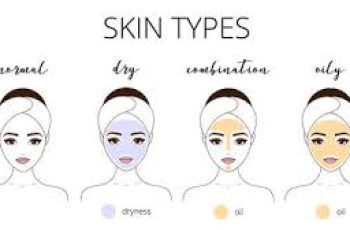
Glucosyl Hesperidin and Hesperidin In Skin Care
Glucosyl Hesperidin and Hesperidin are increasingly popular in anti-aging and skin lightening serums and creams. These powerful bioflavonoids offer numerous benefits for the skin. Known for their potent antioxidant and anti-inflammatory properties, they help reduce signs of aging, brighten skin, and improve overall complexion. Hesperidin benefits include enhancing microcirculation, reducing dark circles, and soothing irritated skin, making these ingredients essential for anyone seeking effective skincare solutions.
Polyphenolic compound that can become glucosyl hesperidin
Antioxidant, anti-inflammatory, and dark eye circle benefits
Safe and commonly used in skin care products
Glucosyl Hesperidin and Hesperidin
Glucosyl Hesperidin and Hesperidin are flavonoids known for their strong antioxidant effects, derived from citrus fruits. Flavonoids are a class of polyphenolic compounds that play a vital role in plant defense and human health, particularly in skin protection. These specific flavonoids are predominantly found in the peels and membranes of citrus fruits such as oranges, lemons, and grapefruits. Hesperidin, in particular, is a flavanone glycoside composed of the aglycone hesperetin and the disaccharide rutinose. When glucosylated to form Glucosyl Hesperidin, the compound becomes water-soluble, enhancing its absorption and effectiveness in skincare formulations. Their potent antioxidant properties help neutralize free radicals, protect against oxidative stress, and support overall skin health.
Hesperidin is a bioflavonoid predominantly found in citrus fruits. It has well-documented antioxidant, anti-inflammatory, and vasoprotective properties. Though traditionally studied for its systemic health benefits, this ingredient is increasingly used in skincare products due to its potential skin health benefits.
Glucosyl Hesperidin is a water-soluble derivative of hesperidin, a naturally occurring flavonoid found primarily in citrus fruits such as oranges and lemons. The glucosylation process enhances the solubility and stability of the original compound, making it more effective in cosmetic formulations.
Skin Care Products
What do they do in skin care?
Both forms of hesperidin are used in skincare for their potent antioxidant and anti-inflammatory properties. They help protect the skin from oxidative stress, reduce inflammation, and improve microcirculation, contributing to a more even skin tone and healthier complexion. They are often found in skin lightening products to treat dark spots, circles under the eyes, and hyperpigmentation.
Conditions
Hesperidin and glucosyl hesperidin are used in creams and serums to treat:
Dark circles under the eyes
Melasma
Hyperpigmentation
Post inflammatory hyperpigmentation
Tired eyes
Eye bags
Benefits
Glucosyl Hesperidin and Hesperidin are potent bioflavonoids derived from citrus fruits, widely used in skincare for their benefits when applied topically.
Antioxidant Properties: Scavenges free radicals and reduces oxidative stress in the skin.
Anti-inflammatory: Helps to calm irritated skin and reduce inflammation.
Vasoprotective Effects: Strengthens capillaries and improves microcirculation, which can reduce dark circles and under-eye puffiness.
Benefits specific to the Glucosyl variety-
Enhanced Absorption: The addition of glucose to hesperidin increases its solubility, enhancing its absorption and efficacy in the skin.
Safety
Both glucosyl hesperidin and hesperidin are considered safe for topical use. They are well-tolerated by most skin types, including sensitive skin. The EWG has not given a safety rating to these ingredients.
Research Studies
Reference 3 discusses several studies using this ingredient on skin. Here are some key findings discussed in this article:
Epidermal Permeability Barrier Function :
Topical applications of 2% hesperidin twice daily for six days significantly accelerated the recovery of the epidermal permeability barrier in young mice after acute disruption. This improvement was associated with increased proliferation, filaggrin expression, and lamellar body secretion.
In aged mice, the same treatment regimen over nine days not only accelerated barrier recovery but also reduced skin surface pH, enhanced differentiation, and increased lipid production and lamellar body formation.
In glucocorticoid-treated mice, topical hesperidin prevented abnormalities in barrier recovery and normalized skin surface pH and lipid processing.
UV Protection :
This ingredient showed protective effects against UVB radiation in keratinocytes. Pre-treatment with hesperidin reduced DNA damage, lipid peroxidation, and protein carbonylation, while also decreasing apoptotic index and reactive oxygen species.
Studies on dermal fibroblasts demonstrated that hesperidin inhibited matrix metalloproteinase expression, reduced β-galactosidase expression, and promoted collagen biosynthesis following UVA irradiation.
In mouse models, topical hesperidin reduced UVB-induced skin erythema, edema, lipid peroxidation, inflammation, and DNA damage. It also increased catalase and superoxide dismutase activity.
Anti-inflammatory and Antimicrobial Effects :
This ingredient’s anti-inflammatory properties help calm irritated skin by reducing the expression of pro-inflammatory cytokines such as TNF-α, IL-1β, and IL-6.
Its antimicrobial activity has been demonstrated against various pathogens, contributing to its potential use in managing skin infections and promoting wound healing.
Anti-skin Cancer Properties :
This phenolic compound has shown potential in reducing the risk of skin cancer. Studies indicate that it can inhibit the proliferation of skin cancer cells and induce apoptosis, making it a promising agent for skin cancer prevention and treatment.
Skin Lightening :
Hesperidin inhibits melanogenesis, the process of melanin production, which helps in reducing hyperpigmentation and promoting an even skin tone. It works by inhibiting tyrosinase, a key enzyme in melanin synthesis.


